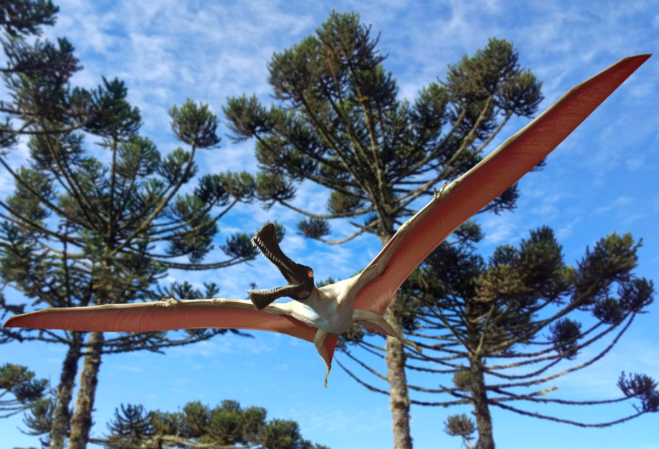
An exceptionally well-preserved fossil of a pterosaur has been discovered in Australia. The newly identified fossil is rather noteworthy because pterosaur fossil findings are extremely rare in that part of the world.
The fossil was originally discovered at the Belmont Ranch by co-owner and manager Bob Elliot in 2017. Mr. Elliot was conducting routine grounds work when he came across the small, brown bones. The ranch has a history of producing fossils, but they are typical of other, larger, dinosaurs. This discovery, in particular, is the first of its kind.
"He knew straightaway this was quite different ... and unlike anything that we'd seen before," says Adele Pentland, a researcher at the Australian Age of Dinosaurs Natural History Museum.
Ferrodraco lentoni, or "Iron Dragon", as the fossil is called, is unfortunately, not a complete specimen. It consists of only parts of the upper and lower jaw, five partial neck bones, incomplete sections of both wings, and several teeth. Although the specimen is not complete, it is still the most complete set of pterosaur remains yet found in Australia.
"It's really a substantial find," says David Unwin, a paleontologist at the University of Leicester. "It's filling in gaps in terms of our knowledge of their spatial distribution and also their distribution in time."
Scientists believe the newly unearthed fossils are somewhere around 96 million years old. This assumption is based on the ages of the rocks in which the fossils were found. Also, scientists know that the pterosaur group, Anhangueria, went extinct nearly 94 million years ago; they are the closest known relatives to date of Ferrodraco. However, the exact age of the fossils is still not known for sure.
Pterosaurs were prolific on Earth between 228 to 66 million years ago, and some grew to massive size. Wingspans of nearly 30 feet are not unheard of. Ferrodraco, however, was considerably smaller, boasting a wingspan of only an estimated 13 feet from tip to tip.
The scarcity of pterosaur bones today largely lies in the fact that in order for these massive creatures to remain in the skies their bones needed to be light and hollow. This, in turn, doesn't bode well in terms of the durability required for fossilized bones to be discovered millions of years later. In fact, Unwin says that all the pterosaur fossils discovered in Australia could fit neatly in a handbag.
So how has Ferrodraco's remains stayed somewhat pristine? Well, scientists believe that the minerals surrounding the fossils acted as an ideal mixture for preservation. The specimen was found amongst rocks that were found to have a high concentrate of iron.
According to Pentland, fluids in the same area, also enriched with iron, were likely absorbed by the dead creature's body which then hardened into a very durable coating, essentially strengthening and protecting the bones for millions of years.
Ferrodraco's nickname is derived from the minerals in which the pterosaur rested for so long. The Latin word for "iron" is "ferro", while "draco" means "dragon", so in all actuality, Mr. Elliot did discover the remains of one of Australia's iron dragons.
© 2025 ScienceTimes.com All rights reserved. Do not reproduce without permission. The window to the world of Science Times.











